Chris Carmen / October 24, 2019
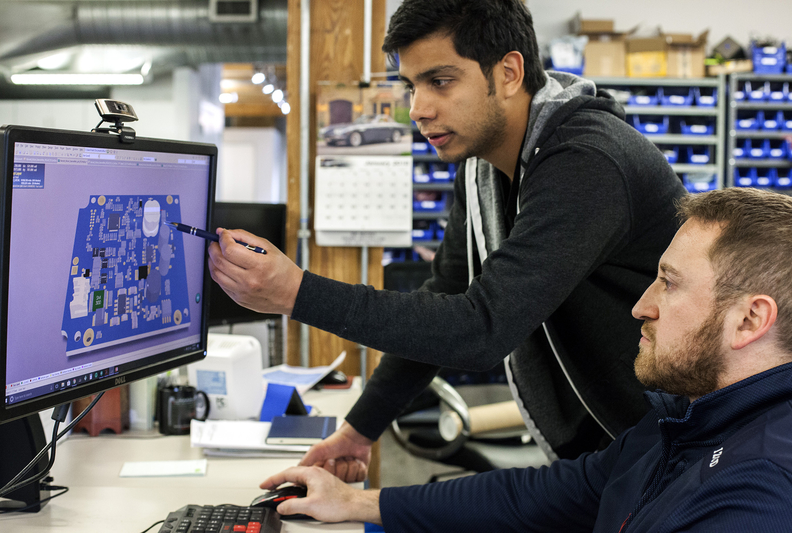
Great ideas come from firms large and small, old and new. We scoured patents to find the places creating solutions for problems you perhaps didn’t even know existed. You’ll be wowed.
No one has a franchise on innovation. Crain’s Most Innovative Companies list includes venture-backed startups and century-old stalwarts, those that are privately held and publicly traded. The list, now in its eighth year, uses patent output as a window into what Chicago companies are good at: wireless electronics, artificial intelligence, medical devices and manufacturing equipment with cutting-edge technology. The ranking, done with intellectual property adviser Ocean Tomo, reveals the diversity of our economy, from software and pharmaceuticals to retail and factories. And it provides insight into the nature of innovation itself. Some inventors are looking to breathe new life into old businesses, others are creating new ones from scratch. Read on for a close-up look at where they found inspiration for their latest inventions and how they’re trying to pick up the pace of innovation.
1. NUCURRENT
What it does: Wireless charging systems | Founded: 2009 | Patents in 2018: 7
To most of us, patents are a black-and-white matter. At NuCurrent, they’re blue and white.
HOW WE MAKE THE LIST
Ocean Tomo—an intellectual property advisory firm that focuses on valuation, strategy and transaction services—reviewed the U.S. patents awarded to Chicago-area companies last year. Focusing on companies with at least five patents, it used an algorithm to rate the quality of their patents based on the likelihood that companies will invest to develop, maintain or defend them. Ocean Tomo has been Crain’s partner in the Most Innovative Companies ranking since it was launched in 2012.
No startup is easy. Wireless charging is particularly hard. Apple failed to bring a highly anticipated product to market this year.
“NuCurrent is one of the go-to companies in the wireless-power industry. They are introducing some cool, innovative products in this commoditized market which are likely to become a benchmark for similar companies to follow,” says Dinesh Kithany, an analyst at IHS Markit. “They have also elevated themselves from just being a coil manufacturer to a solution provider.”
Since it sprang from a business plan competition at Northwestern University a decade ago, NuCurrent has been on the roller coaster that comes with developing cutting-edge technology that customers don’t yet know they need, with long sales cycles and plenty of hiccups. Along the way, NuCurrent sued one of the world’s largest technology companies, Samsung, for patent infringement, claiming the South Korean company used its technology in phones and watches without licensing it (the suit is still pending).
NuCurrent’s technology can be found in hand-held scanners made by Honeywell that are used by delivery drivers, as well as in smartphones. Next up are augmented reality glasses, digital hearing aids and kitchen gadgets. “It’s cool to see the cutting edge before anyone else, to be solving problems before anyone else,” says co-founder and CEO Jacob Babcock, 37. “There have been a lot of false starts. But now we’re seeing a groundswell of interest across different industries, such as automotive and the military.”

Horizon’s most recent breakthroughs around its drug Ravicti involved dosing for different types of patients, such as children.
2. HORIZON THERAPEUTICS
What it does: Pharmaceuticals | Founded: 2005 | Patents last year: 11
Breakthroughs at drug companies don’t end with the invention of a new treatment.
Horizon Therapeutics vaults to No. 2 on our list with five follow-on patents related to Ravicti, the drug acquired by Horizon in 2015 for urea cycle disorders, a rare metabolic disease that can cause a potentially fatal buildup of ammonia.
“The development of a compound or a molecule is a starting point,” says Nelson Alexander, Horizon’s senior vice president for legal. “The research doesn’t end there.“
Horizon, whose main offices are in Lake Forest, is stepping up its R&D capabilities to develop more drugs for rare, or “orphan,” diseases. The company has added nearly 100 R&D workers in the past two years, says spokesman Geoff Curtis. R&D spending roughly doubled between 2015 and 2018 as sales grew to $1.2 billion from $757 million.
“R&D is not a predictable business,” Curtis says. “The challenge always lies in going from the lab to a medicine in market. Rare diseases are even more difficult.”
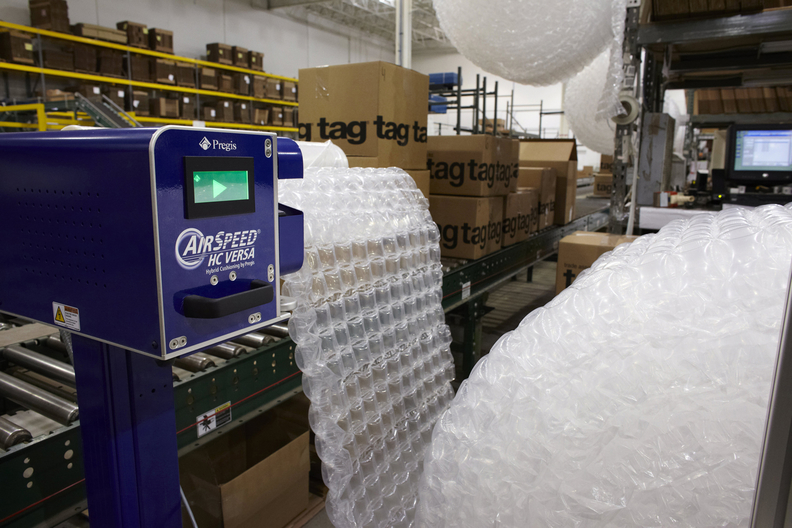
3. PREGIS
What it does: Equipment for packaging materials | Founded: 2005 | Patents last year: 6
Sometimes innovation comes from thinking inside the box.
Pregis makes equipment used by some of the top e-commerce companies to protect the products they ship.
The Deerfield-based company, which traces its roots to Tenneco spinout Pactiv, used to make bubble wrap. Today its machines create an array of packaging, from air-filled wraps and foam to paper-based products. Pregis has more than 350 patents, which has helped it grow packaging from less than $10 million in revenue in 2005, when it spun off from Pactiv, to nearly $1 billion today. It was recently acquired by private-equity firm Warburg Pincus.
“We were cannibalizing our own business, but the margins are exponentially better,” says Tom Wetsch, chief innovation officer. He declines to disclose profits, but Pregis equipment sells for $5,000 to over $100,000. “We deploy thousands of these machines,” Wetsch says.
As the company moved up the value chain, it has created jobs in manufacturing, more than 100 positions making the specialized plastic films that go into its machines.
Wetsch, 56, grew up in Minneapolis but has spent most of his career in Chicago, working for manufacturers that made all kinds of packaging, from bubble wrap and insulating sleeves for coffee cups to the cases for AOL discs and clear air freshener dispensers for Plug-Ins. “The Midwest is a packaging hub,” he says. “There’s a corridor that runs from Green Bay to Chicago where a lot of innovation happens.”

4. PERSONIFY
What it does: Video editing software | Founded: 2010 | Patents last year: 5
The value of a technology breakthrough by a trio of University of Illinois researchers in 2010 is coming into sharper focus.
The company they founded, Personify, moves up to No. 4 from 10th place last year.
Personify developed a virtual green screen, using software to eliminate or blur the background in video, making it better for webinars, videoconferencing or smartphone use. Four years ago, the company turned to artificial intelligence to improve the software, allowing it to better handle smaller image details such as fingers and hair.
“Our users want the very best quality at the lowest computing requirements, and this is not an easy task,” says Sanjay Patel, who co-founded Personify in 2010 with fellow U of I electrical and computer engineering professors Wen-mei Hwu and Minh Do, as well as students Quang Nguyen and Dennis Lin. “Today, a lot of AI is deployed for images and video. We were there very early.”
It’s one of the reasons Personify was acquired this year by an unnamed buyer.
The team isn’t finished. Universities are a key source of innovation and patents, and Personify’s founders are looking to crank up their output. They’ve started a program at U of I called Alchemy to get students involved in solving problems for existing companies in agriculture, auto, logistics, manufacturing and other industries.
“Students want to create their own thing, but they don’t know what they want to build,” Patel says. “Companies know what the next product is that’s needed, but they need talent.”
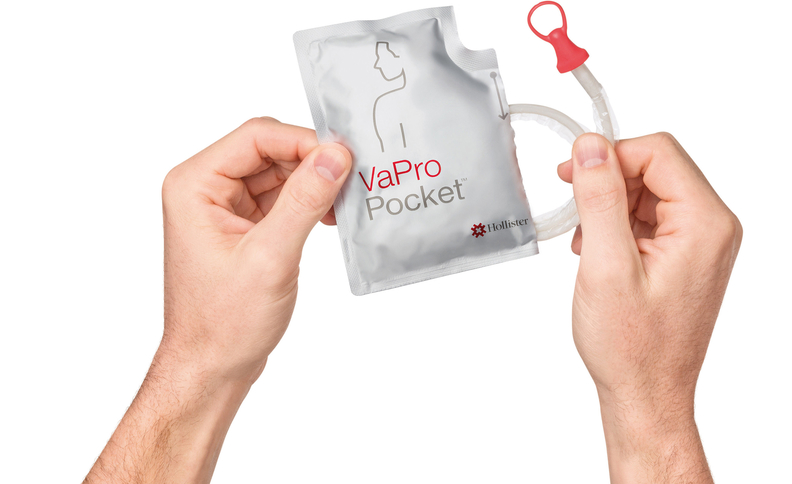
5. HOLLISTER
What it does: Medical products | Founded: 1921 | Patents last year: 16
Hollister got its start in the printing business, providing commemorative birth certificates to hospitals. Eventually it began printing ID bracelets and making clamps for umbilical cords. These days, the company is best known for medical products, such as catheters, ostomy pouches and skin adhesives.
The one constant for the company started in a Chicago garage (and they did it before Hewlett-Packard did it in Silicon Valley) is reinvention. Hollister has exited businesses as quickly as it has started new ones.
The privately held company, which is based in Libertyville, moved into the top 10 of Crain’s Most Innovative Companies list, up from No. 21 last year, based on its innovations in multilayer films and other product categories.
Hollister got its first medical patent in 1960 and now has more than 600 in force worldwide, says Carolyn Sloane, a patent agent at the company.
The pace of innovation is picking up at Hollister and in the industry, says Tim Murphy, general counsel. “It’s been growing exponentially in volume and pace. The way to get better pricing and demand is through product differentiation. If you want to stay on top, you’ve got to keep innovating.”
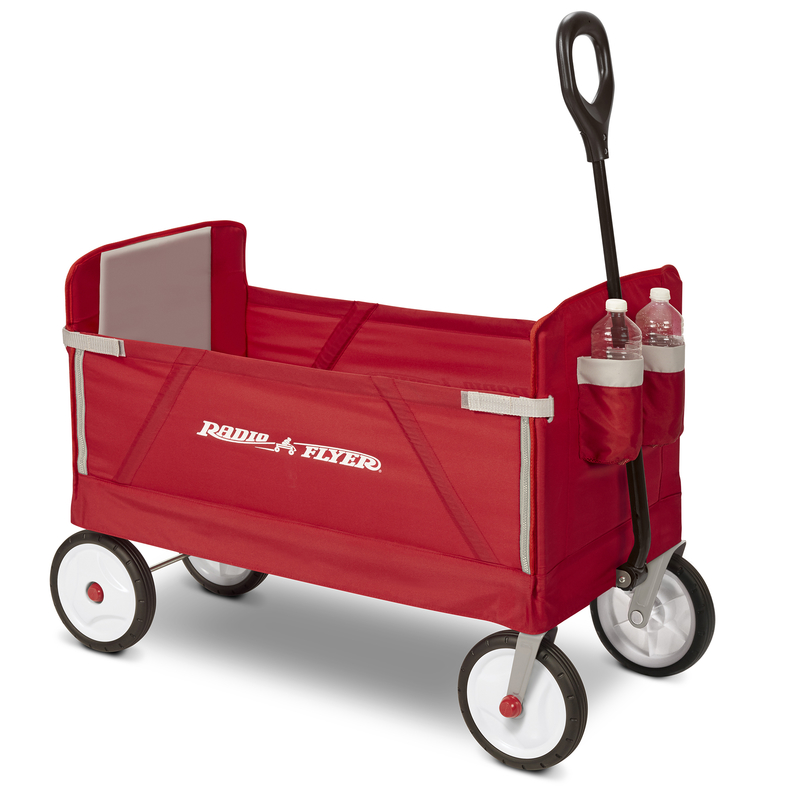
6. RADIO FLYER
What it does: Toys | Founded: 1917 | Patents last year: 6
Even icons need updates.
Radio Flyer’s classic red steel-and-wood wagon was largely unchanged for 75 years, until plastic entered the picture. The latest craze is a foldable wagon made from fabric and steel, some with sides that fold down into a bench or have a snap-on canopy.
“The folding wagon came along in 2016,” says Tom Schlegel, chief innovation officer of the Chicago-based company. “Within a year, we were selling more folding wagons than plastic wagons.”
The related patents are still flowing through to Radio Flyer, which cracks the top 10 of the Most Innovative Companies list for the first time this year. Eighteen of the company’s 75 employees work in product design. The company has received 76 patents, two-thirds of which have come in the past 15 years.
Radio Flyer still sells its wood-and-steel classic, but it’s always reinventing the wagon—and itself.
A few years ago, it partnered with Tesla on a battery-operated car, and the innovations are still showing up in the company’s growing patent and product portfolios. Tesla is a leader in lithium-ion battery technology, which gave Radio Flyer’s design team valuable insights. “We wondered, could we do it?” Schlegel says. “It was a challenge, and it was unique. But we have different battery-operated products in development as a result of it.”
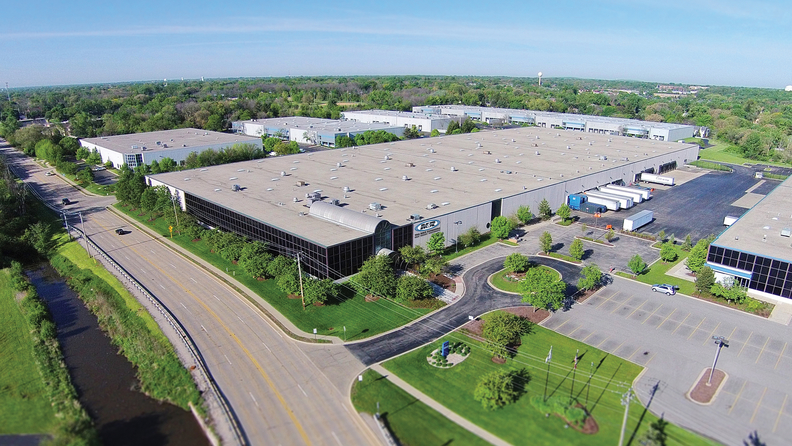
7. M&R
What it does: Screen-printing equipment | Founded: 1985 | Patents last year: 6
Sometimes the best way to move into the future is to take a page from the past.
Companies that make printed T-shirts and clothing adopted digital technology almost as fast as consumers. But as anyone with an inkjet printer can tell you, ink is expensive.
An inkjet allows clothing makers to print razor-sharp images on fabric, but it requires the images be printed over a white base. Laying down the color ink is easy enough. But the heavy white base taxes inkjet printing heads and eats up a lot of ink, driving up costs.
To solve the problem, M&R founder Rich Hoffman looked to traditional screen printing methods—laying down white ink with a squeegee and screen, then turning to the inkjet. “We’ve married screen printing with digital,” says David Blake, vice president of sales at the Roselle company. “For over seven years, we worked on the technology to put the two together.”
The result is equipment that can print up to 400 pieces per hour, compared with 60 pieces per hour for other machines. Setup time was cut to 20 minutes from two to three hours. M&R has been innovating since it was started by Hoffman in 1985, and it’s now the largest maker of screen-printing presses, which can cost $350,000 to $500,000.
Hoffman has retired since selling the company four years ago. CEO Danny Sweem has doubled down on the digital push since joining the company a year ago, when M&R received six patents. “Our job is to continue to innovate,” Blake says. “Every one of these patents is about efficiency.”

8. RTC
What it does: Retail shelf-display systems | Founded: 1950 | Patents last year: 11
Inspiration can strike anywhere: in bed, in the shower, on the beach—or at a ballgame.
Richard Nathan was at a Bulls game, watching the digital banner ads on the front edge of each level of the stadium, and wondered if the technology could be adapted to advertising on grocery store shelves. It’s one of the 11 patents awarded last year to Rolling Meadows-based RTC, a leader in store shelves for retailers.
“This is a defining product for the future,” says Nathan, whose father, Walter, founded RTC as Round Tubes & Cores in 1950. “I just can’t tell you how many years in the future that is. We’ve worked on it for years,” he says of the shelf-edge advertising. “There’s a lot more we still have to figure out. We need more cost-effective digital technologies to make it affordable for wide-scale adoption. We see product development as an investment in our future, even if the returns are down the road.”
RTC had 11 patents last year, including a shelving system with modular organizers that allow retailers to quickly stock or change rows of products, rather than stocking or rearranging individual items. “It saves labor,” Nathan says of the new product, which cuts the time to a minute or two from as long as a half-hour. “When you have tasks in a grocery store that no one wants to do, nobody does them. If you make it easier, the tasks get done.”
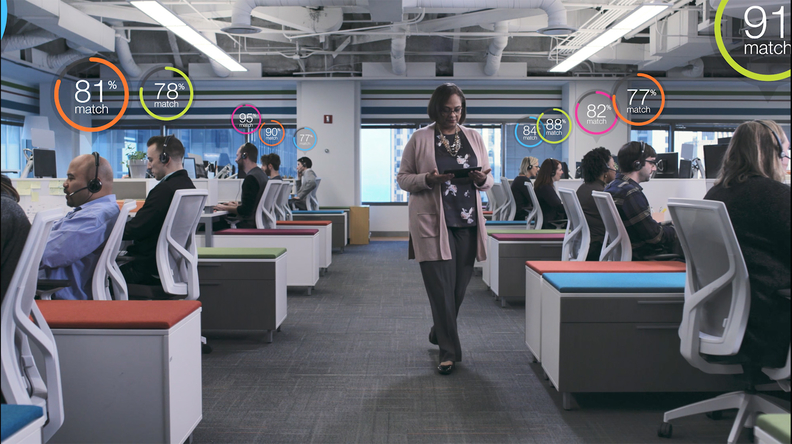
9.MATTERSIGHT
What it does: Predictive analytics software | Founded: 2006 | Patents last year: 8
If call centers don’t exactly scream “innovation” to you, take a look at Mattersight.
The Chicago-based company is making its fourth appearance on Crain’s Most Innovative Companies list. It has done groundbreaking work in artificial-intelligence software to begin understanding what we say and what that says about us.
Mattersight started out doing real-time analysis of incoming calls to quickly predict the types of people who were calling, which helped call centers more effectively route calls to employees who could most efficiently handle them. Now Mattersight has created improved analytics tools to help better distribute the workloads in call centers, addressing another big problem for the industry: high turnover.
Its patent portfolio reflects the innovation loop that requires companies to keep inventing. “New technology creates unintended consequences,” says David Gustafson, general manager of Mattersight, which was acquired last year by Nice, a software maker based in Israel. “As you get better at using data to assign calls, you run the risk of changing an employee’s workload. We’ve created new technology that distributes calls more evenly across employees.”
The company isn’t finished. It’s already been issued 15 patents this year, nearly double its 2018 total and eclipsing its output in 2017.

Source: https://www.chicagobusiness.com/john-pletz-technology/most-innovative-companies-2019
« Previous Next »
